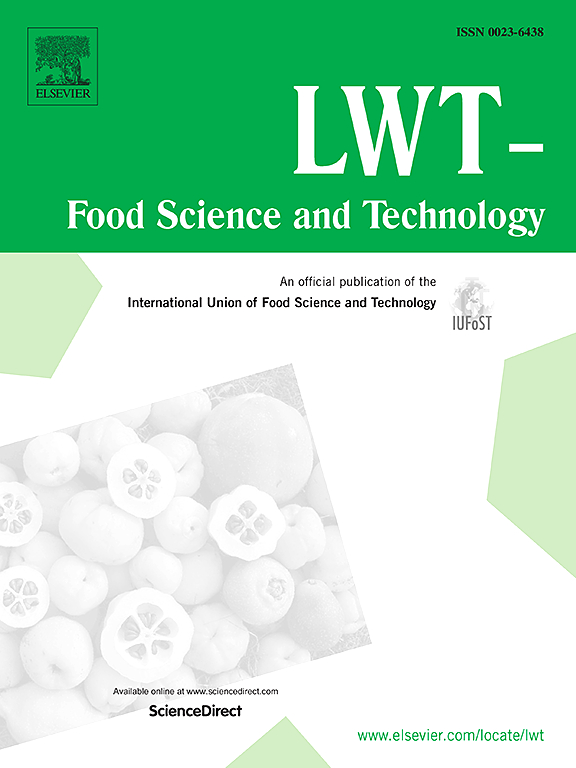Construction of a quercetin-kafirin nanodelivery system by ultrasound-treated: Synthesis and characterization
IF 6
1区 农林科学
Q1 FOOD SCIENCE & TECHNOLOGY
引用次数: 0
Abstract
Quercetin exhibits notable bioactivity, however, its poor solubility and stability result in rapid degradation and limited bioavailability. To solve this problem, kafirin was used to encapsulate quercetin, and an ultrasonic-assisted anti-solvent precipitation method was employed to construct a nanoparticle delivery system. The results showed that kafirin-quercetin nanoparticles (KQN) subjected to ultrasonic treatment (600 W, 120 s) exhibited particle sizes ranging from 90.16 to 213.27 nm and achieved a maximum encapsulation efficiency of 81.36 % for quercetin. Spectral analysis and molecular docking identified van der Waals forces, hydrogen bonds, and other interactions between quercetin and kafirin, which enhanced nanoparticle stability. The nanoparticle system exhibited potent antioxidant and anti-inflammatory activities, as evidenced by DPPH, ABTS, FRAP, and inhibition of NO production. These findings establish a robust theoretical basis for enhancing the bioavailability of quercetin, fostering nanoparticle applications in the food industry, and expanding the potential uses of kafirin.
超声处理槲皮素-卡菲林纳米递送体系的构建:合成与表征
槲皮素具有显著的生物活性,但其溶解度和稳定性差,降解快,生物利用度有限。为解决这一问题,采用卡非林包封槲皮素,并采用超声辅助反溶剂沉淀法构建纳米颗粒给药体系。结果表明,超声处理(600 W, 120 s)得到的槲皮素纳米颗粒(KQN)粒径在90.16 ~ 213.27 nm之间,槲皮素包封率最高可达81.36%。光谱分析和分子对接确定了槲皮素和卡非林之间的范德华力、氢键和其他相互作用,这些相互作用增强了纳米颗粒的稳定性。纳米颗粒系统显示出强大的抗氧化和抗炎活性,DPPH、ABTS、FRAP和NO生成抑制都证明了这一点。这些发现为提高槲皮素的生物利用度、促进纳米颗粒在食品工业中的应用以及扩大卡非林的潜在用途奠定了坚实的理论基础。
本文章由计算机程序翻译,如有差异,请以英文原文为准。
求助全文
约1分钟内获得全文
求助全文
来源期刊

LWT - Food Science and Technology
工程技术-食品科技
CiteScore
11.80
自引率
6.70%
发文量
1724
审稿时长
65 days
期刊介绍:
LWT - Food Science and Technology is an international journal that publishes innovative papers in the fields of food chemistry, biochemistry, microbiology, technology and nutrition. The work described should be innovative either in the approach or in the methods used. The significance of the results either for the science community or for the food industry must also be specified. Contributions written in English are welcomed in the form of review articles, short reviews, research papers, and research notes. Papers featuring animal trials and cell cultures are outside the scope of the journal and will not be considered for publication.
 求助内容:
求助内容: 应助结果提醒方式:
应助结果提醒方式:


